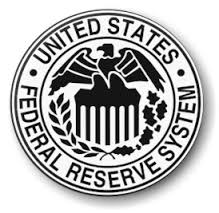Financial analysis has a logical progression from general to specific. First, the analyst considers the economic environment to gain insight on where stock prices are headed. Then, the analyst considers the industry outlook since industries react differently to changes in the economy.
At the individual stock level, what’s happening at the macro-economic level may not apply. Some firms do poorly even while the general economy prospers. Other might come up with a new innovation while the rest of the market is in a slump.
It is often tough to purchase stock in a depressed market, but SCM and others take a contrarian approach relish these moments when investors are liquidating their positions out of fear. This makes fundamental analysis more important.
Economic Environment
The business cycle is an economic pattern of expansion and contraction averaging three to ten years. GDP measures the total value of transactions in a business cycle. A recession is a period of rising unemployment and declining GDP where the economy doesn’t grow for two consecutive quarters.
 Other measures of economic conditions include leading, coincidental and lagging indicators. The more common leading indicators are new orders, building permits and stock prices. Delivery times and jobless claims are coincidental while non-farm payroll activity is considered lagging.
Other measures of economic conditions include leading, coincidental and lagging indicators. The more common leading indicators are new orders, building permits and stock prices. Delivery times and jobless claims are coincidental while non-farm payroll activity is considered lagging.
Other more subjective leading indicators include consumer sentiment and purchasing manager confidence. The consumer represents two thirds of the economy and tends to drive decisions for all sectors. Purchasing managers have to be forward thinking to make sure the raw materials or finished goods are on hand to satisfy demand.
Inflation expectations have a major impact on investors and policymakers. If inflation is on the rise, consumers will purchase goods sooner than later at the lower prices. Inflation is hard to contain, so public policymakers spend much effort in forecasting.
Federal Reserve
The Federal Reserve has a large influence on the economy through its monetary policy. Their objective is to stabilize general price levels and ensure full employment. They apply their policy by nudging interest rates and controlling the money supply in the short-term. More recently,they have been buying bonds to tamp down longer rates.
They target the overnight rate between banks by requiring reserves to held in their vaults and adding and subtracting liquidity to keep short-term rates in the desired range. They can free up more liquidity by reducing the amount of reserves commercial banks are required to have on deposit at the Fed.
This focus on interest rates has an effect on a firm’s earning capacity and ultimately its share price. When the Fed drains money out of the system and tightens credit, the cost of capital rises while earnings capacity is adversely affected. On the other hand, when the Fed loosens up, the firms and consumers can borrow more cheaply and activity expands, boosting the stock market.
Industry Analysis
Industries go through life cycles much like plant and animal life cycles, sometimes independent of the economy. A new innovation might spawn an industry, attracting new players and making it more competitive. Other events can kill an industry such as Uber and the taxi business.
The timing of the cycles can be very short or there can be many barriers to entry which tends to lengthen the cycle. Some industries are more susceptible to the health of the economy creating a boom or bust profile like cars and housing while others follow a steadier path uninfluenced by the economy like toothpaste or diapers.
Other factors like government regulations, labor conditions and financing requirements affect the life cycle of industries. Some industries are more regulated than others such as banks and utilities while others are lightly regulated such as entertainment or apparel.
Expected Economic Environment
The linkage between the economy and share prices is complex, but forming an opinion about the future economic environment is essential. Areas of focus include interest rates inflation, employment and economic growth.
Industries such as financial institutions and cyclical industries are sensitive to interest rate changes. Changes to inflation expectations affects commodity-oriented industries such as oil and minerals. Consumer staples and healthcare hold up better during recessionary times.
Visit these topics for further detail or return to the Investment Basics page:
- Basics Introduction
- Security Markets
- Information Sources
- Risk and Portfolio Theory
- Investment Companies
- Stock Valuation
- Macroeconomic Environment
- Statement Analysis
- Bond Market
- Foreign Securities
The material presented on this page and Investment Basics pages were adapted from Dave’s lecture notes for the Investments for Professionals course taught at UCLA 1998-2005 and three decades of practical experience. See our Site Credits page for reference sources.


